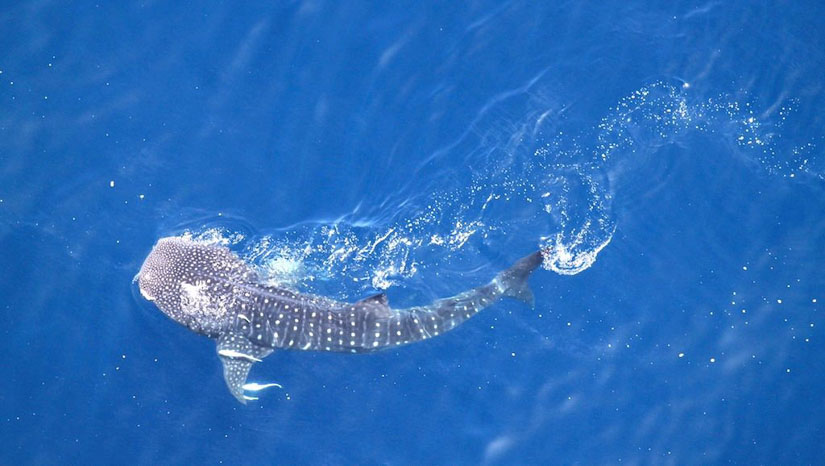There is a lot of intrigue surrounding whale sharks. From their deceiving name to their enigmatic lifestyle there is still so much to learn about the largest fish in the ocean.
Despite the word “whale,” whale sharks are considered a fish as they breathe by means of gills; and despite the word “shark,” they do not have the typical toothy smiles of other sharks. Whale sharks continually filter feed plankton and fish eggs to maintain its large body size, which is typical of all the large animals in the ocean.
And amazingly enough, this graceful creature resides right here in our backyard, the waters of the northern Gulf of Mexico. Reports of whale sharks in the Gulf date back to the 1930’s but we still know very little about their biology or habitat preferences. Through efforts conducted by The University of Southern Mississippi (USM) and their colleagues, we are realizing that their presence in the Gulf is routine and predictable.
In 2003, USM’s Center for Fisheries Research and Development began to dedicate research efforts toward understanding whale shark biology, occurrence, distribution, and movements in northern Gulf. This research included a Northern Gulf of Mexico Whale Shark Sightings Survey that allowed the public, recreational/commercial fishers, petroleum platform workers, and researchers a forum by which to report sightings.
The survey has been extremely successful and has allowed us to identify occurrence patterns that aid in research interactions. Most encounters are with solitary animals but approximately one-third involve aggregations of up to 200 individuals. It is the public’s involvement that has made this such a successful research platform.

Whale shark in its habitat (Photo courtesy of On Wings of Care)
Our encounters with whale sharks typically occur offshore at the continental shelf break and their presence is correlated with recent fish spawns. The whale sharks show up during the summer right on time to feed on the fish eggs distributed throughout the water column.
However, the summer of 2023 is proving to be an anomalous year, as the majority of the sightings are occurring in nearshore waters along the Florida panhandle. This has not happened since 2009. The sharks seem to be targeting a fish spawn but the shift in location appears to be driven by water temperature changes. We are currently studying these animals while they are nearshore to gather as much information from them as possible.
During our research endeavors, we photograph the left side of the body immediately behind the gills as this spot pattern can be used to identify different individuals. Through the photo identification process, we have discovered connectivity between our Gulf region and the Yucatan Peninsula of Mexico, as well as between the Yucatan Peninsula and Belize, Honduras, and Cuba.
Genetically there are reports that the Atlantic animals make up a single population, which implies there is movement of the animals throughout this basin; however, we have yet to understand the migratory pathways or patterns. Our current efforts involve tagging the animals with satellite tags to monitor long term movements and potentially, movements beyond the Gulf and Caribbean basins.
You can help in our efforts! If you have recently seen a whale shark please visit our sightings report page. We would love to hear from you! The information we look for is: date, location of encounter, number of whale sharks, estimated shark size, and behavior. We would also love to know if you took any photos or video. Remember, you should only observe these beautiful creatures and avoid touching or impacting their movements. Your reports directly help us understand more about these amazing fish!
You can also follow us on social media to stay in touch with our research efforts:
- USM Center for Fisheries Research and Development
- USM Shark Research Program
- USM Whale Shark Research.
We would like to acknowledge our partners in the current satellite tagging efforts: Blue Water Research Institute, National Oceanic and Atmospheric Administration, Bureau of Ocean Energy Management, and the Okaloosa Coastal Research Team.